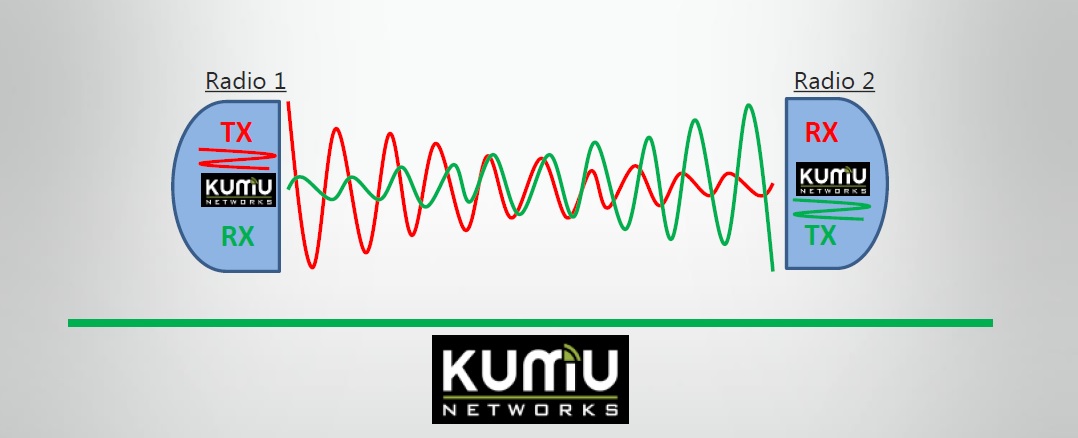Here’s something that sounds almost too good to be true: a wireless network solution that allows operators to both send and receive information on the same frequency at the same time. But is it, really?
Kumu Networks’ VP of Product Management Joel Brand told Wireless Week his company has developed a viable full duplex system – technology he indicated could be “game changing” for the industry.
According to Brand, Kumu’s full duplex solution works like a set of noise-cancelling headphones for radios in wireless networks to eliminate the issue of self-interference. The system, he said, takes the knowledge it has about what it is transmitting and reverses that noise to cancel it out and enable full duplex use of the radios. In the short term, the technology is compatible with current 4G standards (as well as technologies like 256-QAM and MIMO), but in the future can be upgraded for 3GPP specs, Brand added.

Diagram portraying Kumu Network’s noise-cancelling technology for full duplex. Credit: Kumu Networks
Brand indicated this development is huge for an industry that currently utilizes technologies like Frequency Division Duplex (FDD) and Time Division Duplex (TDD). Unlike full duplex, FDD requires two different frequencies, one to send and one to receive, while TDD only allows one signal, uplink or downlink, to talk at a time. In an environment where operators are increasingly demanding more spectrum to meet traffic needs, Brand said these techniques are wasteful by comparison.
Full duplex, he said, could not only double the amount of available spectrum, but could also make spectrum allocation easier. And those benefits apply to unlicensed spectrum like WiFi as well.
“If today you can transfer X number of bits in one hertz, you will be able to transfer double that number of bits in the same amount of frequency,” Brand explained. “But it will do more than that. If you think about the cost of FDD spectrum versus the cost of TDD spectrum, TDD is a lot cheaper than FDD spectrum because with FDD you’ve got to find a matched pair that are close enough such that the components don’t need to be different between the transmit and receive but they need to be far enough such that it doesn’t interfere … So (like TDD) it will make spectrum allocation a lot easier because you will only need one chunk at a time.”
The former claim is backed up by a commercial trial Kumu recently conducted with Cellcom in Israel using full duplex self-backhaul at 1.8 GHz using Nokia’s Flexizone small cell. That test found the system worked without issues and expanded coverage to serve 50 percent more users using the same macro base station.
Given these promises, it’s no wonder operators are interested. Investors in Kumu Networks include T-Mobile parent company Deutsche Telekom, Verizon, Telefonica, and SK Telecom.
A Verizon spokesman told Wireless Week the carrier has “worked with Kumu to facilitate field-based technical testing of their prototype solutions.” The company is “one of many vendors” with whom Verizon has done testing, but the spokesman said Verizon continues to work with Kumu.
Sprint also chimed in following a request for comment, relaying via a spokeswoman that “full duplex technology is a great enabler for both 4G and 5G networks that could potentially make even more efficient use of our 2.5 GHz spectrum.”
But Brand was upfront in noting there are currently a few downsides with full duplex.
First, like any new technology, it is relatively big and also expensive. But Brand said Kumu is working to bring down both the size and cost of the system.
Second, Brand said that anytime you stick something in front of a radio, insertion loss becomes a factor. However, he indicated Kumu’s technology is getting to the point where it competes in terms of insertion loss with traditional filters.
So what’s next?
Brand said Kumu is looking ahead to the launch of a new full duplex chip, which will start shipping in the middle of next year, and is actively participating in various standards efforts to make sure full duplex is included.
Filed Under: Infrastructure




